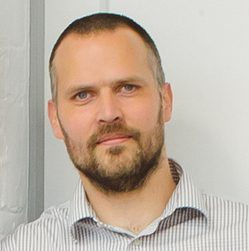
Abstract
Body Impedance is an effective biometric because each human body
exhibits a unique response to a signal applied at the palm of one hand
and measured in the palm of the other hand. We will see how body
impedance can be used both as a traditional biometric; to generate
cryptographic keys for use in traditional security purposes; or for
device pairing.
Our device pairing scheme is based on the idea that two devices can
pair, if they are physically held by the same person (at the same
time). To pair two devices, a person touches a conductive surface on
each device. While the person is in contact with both devices, the
human body acts as a transmission medium for intra-body communication
and the two devices can communicate through the body. This body
channel is used as part of a pairing protocol which allows the devices
to agree on a mutual secret and, at the same time, extract physical
features to verify that they are being held by the same person. We
prove that our device pairing protocol is secure with respect to a
strong threat model and we build a proof of concept set-up and conduct
experiments with 15 people to verify the idea in practice
Bio
Kasper Rasmussen is an Associate Professor in the Computer Science
Department at the University of Oxford. He joined the department in
2013 and in 2015 was awarded a University Research Fellowship from the
Royal Society in London. Prior to being at Oxford, Kasper Rasmussen
spent two years as a post-doc at University of California, Irvine.
Kasper Rasmussen did his Ph.D. with prof. Srdjan Capkun at the
Department of Computer Science at ETH Zurich (Switzerland), where he
worked on security issues relating to secure time synchronization and
secure localization with a particular focus on distance bounding. His
thesis won the “ETH Medal” for an outstanding dissertation from the
Swiss Federal Institute of Technology and he was additionally awarded
the Swiss National Science Foundation (SNSF), Fellowship for
prospective researchers.
